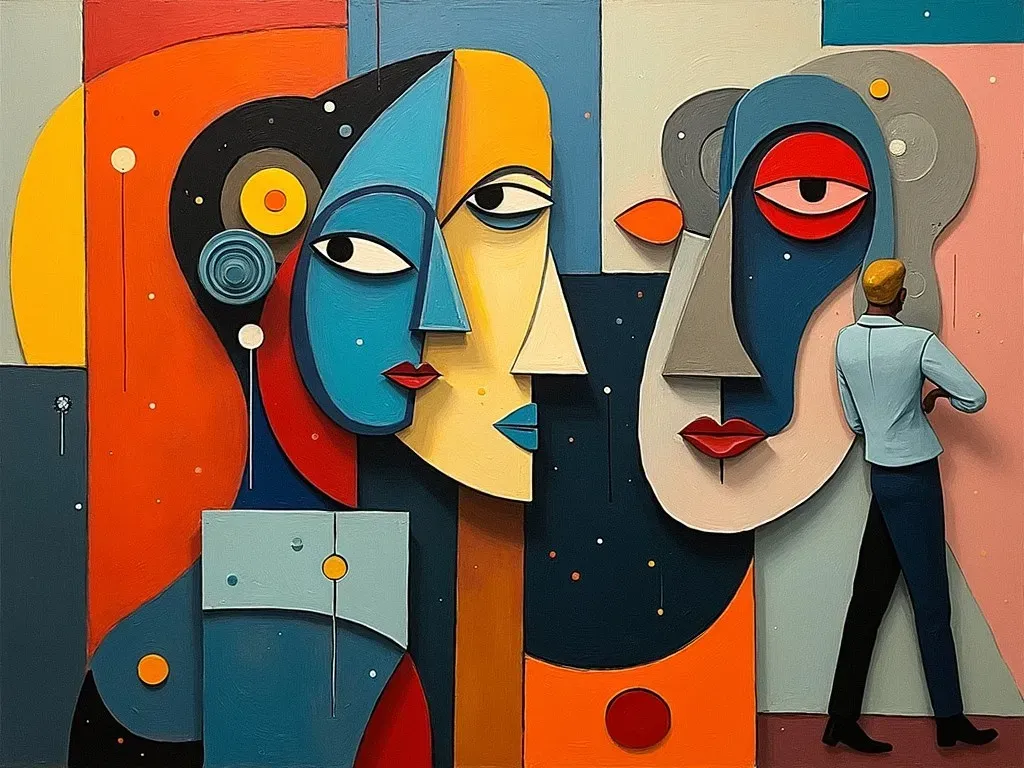Pablo Picasso type of art has fascinated art lovers and historians alike for over a century. From Cubism to Surrealism, Picasso exemplified the evolution of modern art through various styles, mediums, and Techniques. As one of the most influential artists of the 20th century, his contributions to the world of art are invaluable and immensely diverse.
An Overview of Pablo Picasso’s Artistic Journey
Pablo Picasso (1881–1973) was a Spanish painter, sculptor, printmaker, and ceramicist who influenced the art world in groundbreaking ways. Often associated with a wide range of art styles, Picasso is most famous for co-founding the Cubist movement, revolutionizing perspectives in visual art. His artistic journey can be categorized into different phases, each signifying a shift in style, technique, and thematic approach.
Key Artistic Phases:
| Phase | Years Active | Notable Styles | Key Works |
|---|---|---|---|
| Blue Period | 1901 – 1904 | Blue tones, melancholic themes | La Vie, The Old Guitarist |
| Rose Period | 1904 – 1906 | Warm colors, circus themes | Family of Saltimbanques |
| African Period | 1906 – 1909 | Primitivism, African influences | Les Demoiselles d’Avignon |
| Cubism | 1909 – 1921 | Geometric shapes, multiple perspectives | Violin and Candlestick, Guernica |
| Surrealism and later works | 1920s – 1970s | Abstract forms, emotional explorations | The Weeping Woman |
The Unique Characteristics of Picasso’s Art Styles
1. Cubism: The Innovator’s Signature Style
Cubism emerged in the early 20th century, primarily developed by Picasso and his contemporary Georges Braque. Characterized by fragmented forms and multiple perspectives, this style reshaped traditional notions of representation in art.
Notable Features of Cubism:
- Geometric Shapes: Forms are broken down into geometric components.
- Simultaneity: Multiple viewpoints represented within a single artwork.
- Limited Palette: Often uses monochromatic colors to focus on form rather than color.
Famous Cubist Works:
- Violin and Candlestick (1910)
- Guernica (1937)
2. Surrealism: Dreams and Distortions
Following Cubism, Picasso’s art began to explore the subconscious and dream-like themes during the Surrealism movement. This period focused on releasing the creative potential of the unconscious mind.
Characteristics of Surrealism:
- Distorted Forms: Figures are often exaggerated or altered.
- Bizarre Juxtapositions: Unexpected combinations of objects and subjects.
- Emotional Expression: Captures emotions that defy rational understanding.
Key Surrealist Works:
- The Weeping Woman (1937)
- Girl Before a Mirror (1932)
3. Neoclassicism: A Return to Tradition
In the aftermath of World War I, Picasso experienced a return to Neoclassicism, reflecting a desire for stability and tradition amid chaos. This style often displayed a return to classical forms and themes.
Notable Features of Neoclassicism:
- Classical Themes: Mythological subjects and historic figures.
- Balanced Composition: Symmetrical designs that evoke harmony.
- Naturalistic Representation: Greater attention to proportion and realistic depiction.
Renowned Neoclassic Works:
- Three Women at the Fountain (1921)
- The Pipes of Pan (1923)
Picasso’s Drawing Style: Line as Expression
Pablo Picasso’s drawing style is another substantial component of his artistic identity. He famously believed that "if you can draw, you can learn to paint." His drawings varied from quick sketches to intricate studies, often focusing on the essence of form.
Characteristics of His Drawing Style:
- Bold Lines: Use of strong outlines to define shapes.
- Simplification: Reduction of forms to their fundamental elements.
- Expressive Flair: Lines that convey movement and emotion.
Noteworthy Drawings:
- The Lovers (1923)
- Head of a Woman (1936)
Frequent Asked Questions (FAQs)
Q1: How many paintings did Picasso create in his lifetime?
Pablo Picasso is estimated to have created around 50,000 artworks, including paintings, drawings, sculptures, ceramics, prints, and textiles.
Q2: What is the most famous Picasso painting?
One of Picasso’s most famous works is Guernica, created in response to the bombing of the town of Guernica during the Spanish Civil War, symbolizing the tragedies of war.
Q3: Did Picasso ever work in mediums other than painting?
Yes, Picasso was versatile in his artistic endeavors, working across various mediums including sculpture, printmaking, ceramics, and textiles.
Q4: How did Picasso’s style change throughout his life?
Picasso’s style evolved significantly over his lifetime, transitioning from realistic representation in his early years to a more abstract and exploratory approach in his later works.
Q5: Where can I learn more about Picasso’s art and life?
For a deeper understanding, resources such as The Art Story and Wikipedia offer a comprehensive overview of his journey, techniques, and major works.
Conclusion
Pablo Picasso remains an enduring symbol of innovation in the art world. His pioneering work and ability to merge various art forms have left a lasting legacy on both contemporary art and the broader cultural landscape. Through his evolution from the Blue Period to Cubism and beyond, Picasso’s art continues to inspire, provoke thought, and challenge the boundaries of creativity.
The exploration of Picasso’s type of art reveals the power of artistic expression and the myriad ways it can reflect our perceptions of reality.
